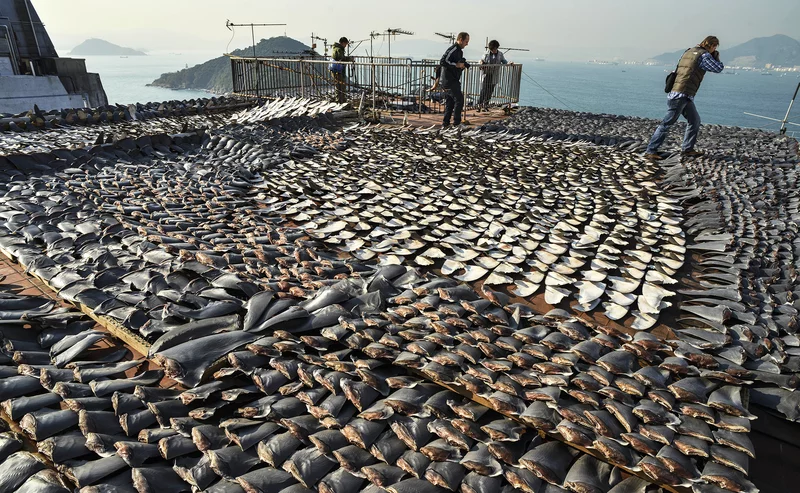
By Savithri Sellapperumage
One third of chondrichthyan species such as sharks, rays, and chimeras are facing extinction, mainly due to unsustainable fishing. This phenomenon is exacerbated with high demand for dried shark fins worldwide.
Shark fins are extracted using several methods; by removing the fin upon catching the shark, which is then not discarded and as another method, using a practice of finning where fins are cut off after catching a shark and their mutilated body is then tossed back to sea. However, in the latter method, the shark is often alive after cutting its fins and they meet a painful end by bleeding, drowning, and starving to death. Therefore, it is prohibited in most countries around the world. Any shark of any age are hunted for their fins however, fins of sharks such as Blue Shark, Whale Shark, and Basking Shark are most traded and sought after. Shark fins are used for cuisine in Asia and used for medicinal purposes as well. Shark fin soup is very costly, as much as $100.00 a bowl served for Chinese nobility, weddings and ceremonies and Dried shark fin is the most expensive seafood product, sold for upwards of $1,000 per kilogram ($2,200 per pound).
Sri Lankan waters are home to over 100 species of sharks and rays and at least 64% of them are listed in the IUCN Red List reported threatened. Shark fin exportation has been in practice in Sri Lanka for decades. However, shark populations has reported to be declining in the waters of Sri Lanka owing to overfishing practices. Accordingly, shark fishing too has been reported to have declined over the years with the declining shark population in Sri Lankan waters as well as increasing trend of fishing Tuna.
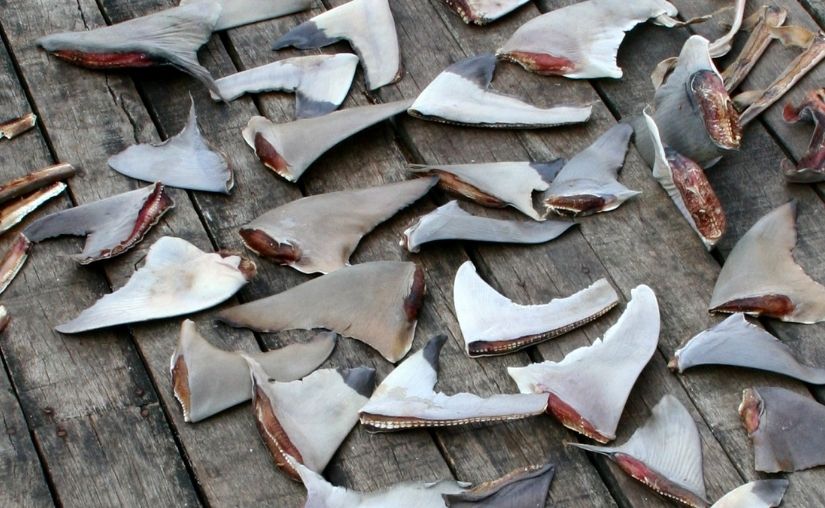
Shark fin export industry in Sri Lanka
In Sri Lanka, sharks are caught as a bycatch and in small scale target fishing. The process of shark products exportation is reported as follows; the caught sharks are unloaded from the boat and then are removed of its fins. Then, meat and dried fins are exported to relevant countries.
In the international market, Hong Kong is the largest importer of Shark fins: European countries such as Spain, Portugal, the Netherlands, France and Italy too have become key suppliers of shark Fin. Meanwhile Sri Lanka exports to countries including Hongkong and Singapore.
Sri Lanka’s shark fins exports are classified as:
1. Frozen fish fins, heads, tails, maws, and other edible fish offal (excl. livers, roes, milt and shark fins)
2. Fresh or chilled shark fins
3. Prepared or preserved shark fins, whole or in pieces
4. Shark fins, smoked, dried, salted or in brine
5. Frozen shark fins
Following figure depicts the values and top destinations of dried shark fins exported by Sri Lanka from 2012- 2017.

Several online platforms too indicate Sri Lankan sellers (as individuals traders and companies) of Shark fins available for exportation; go4worldbusiness.com is one of the sites.
Via the diagram below, the status of Shark fin exportation for over 15 years is depicted. The quantities are observed to be fluctuating however, exportation trends have increased gradually during the recent period of 2013- 2019.

Rules and Regulations for shark fin industry in Sri Lanka
Laws pertaining to the shark fin industry differ from country to country. While some countries prohibit finning, they do not prohibit sale of fins purchased elsewhere. In Sri Lanka, the approach is two fold; 1. to better utilize the carcass of a shark caught 2. to ensure the protection of endangered shark species.
Among many institutions responsible of conservation of biodiversity in Sri Lanka such as the Department of Wildlife conservation, one of the main institutions established with the legal mandate to manage all fisheries in Sri Lanka is Department of Fisheries and Aquatic Resources (DFAR). In 2015, legislation placed in 2001 was updated and gazette was enacted to prohibit shark finning and the discarding as per Gazette 1938/2 – October 26, 2015. Accordingly, removal of fins of any shark onboard a vessel, the discarding of a carcass from which the fins have been removed, retention onboard, transshipment, or landing of fins unless naturally attached to the body of the shark are prohibited.
Additionally, Sri Lanka is accountable to international regulations established under the Convention on International Trade in Endangered Species of Wild Fauna and Flora (CITES), Convention on the Conservation of Migratory Species of Wild Animals (CMS), United Nations Convention on the Law of the Sea (UNCLOS), and Indian Ocean Tuna Commission (IOTC) all of which seek to conserve shark varieties including endangered, avoid Illegal Unreported and Unregulated fishing.
Sri Lanka compiled National Plan of Action for the Conservation and Management of Sharks in 2013 and was revised in 2018. Strategic objectives of the SLNPOA-Sharks (2018-2022) are; 1. Implementing Laws and legal frameworks necessary for the conservation of Shark species in Sri Lankan waters by 2026; 2. Harvesting strategies, together with harvest control rules and tools consistent with the principles of biological sustainability and rational long-term economic use are in place and implemented for key Shark species including but not limited to one or more directed Shark fishery, silky shark, blue shark and mobulids, by 2026; 3. Critical Shark habitats are protected through MPAs (including Fisheries Management Areas)22and marine biodiversity and ecosystem structure and function necessary for the conservation and management of Sharks are maintained, by 2026.
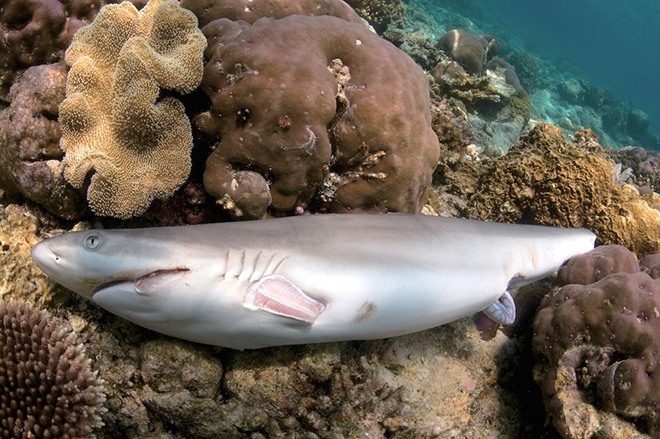
Challenges of regulating shark fin industry in Sri Lanka.
Despite regulations established, Sri Lanka continues to report illegal, unreported, and unregulated fishing of sharks thus making it impossible to track data of shark fin industry. The issue is exacerbated as, aside from requiring all sharks to be landed with fins attached to the body, majorly only few species enjoy legal protection: the pelagic thresher sharks, bigeye thresher sharks, common thresher sharks, oceanic whitetip sharks, and whale sharks. Fishing regulations on unsustainable fishing methods such as bottom trawling or dynamite fishing are poorly enforced. Traders or companies continue to illegally export shark fins without permits. Regulations remain on paper with lack of enforcement. Due to dualistic legal system, implementation of international regulations such as CITES remain challenging.
However for an instance of compliance to CITES, a recent instance of seizing Illegal exporting of endangered shark species’ (Shortfin Mako Shark and the Hammerhead Shark) listed under CITES red list fins in 2021 accounting to 200-300 sharks can be sited as a positive development.
Strengthening legislation and institutional capacities to tackle illegal shark finning, increase research and data gathering to maintain an updated database of shark fin industry are needs of the hour.
Cover Image by Antony Dickson

Climate Change Impacts on Fisheries and Aquaculture in Sri Lanka
By Moira Alfred Sri Lanka, a tropical nation near the equator, is heavily reliant on its fisheries and aquaculture industry. However, this island, renowned as
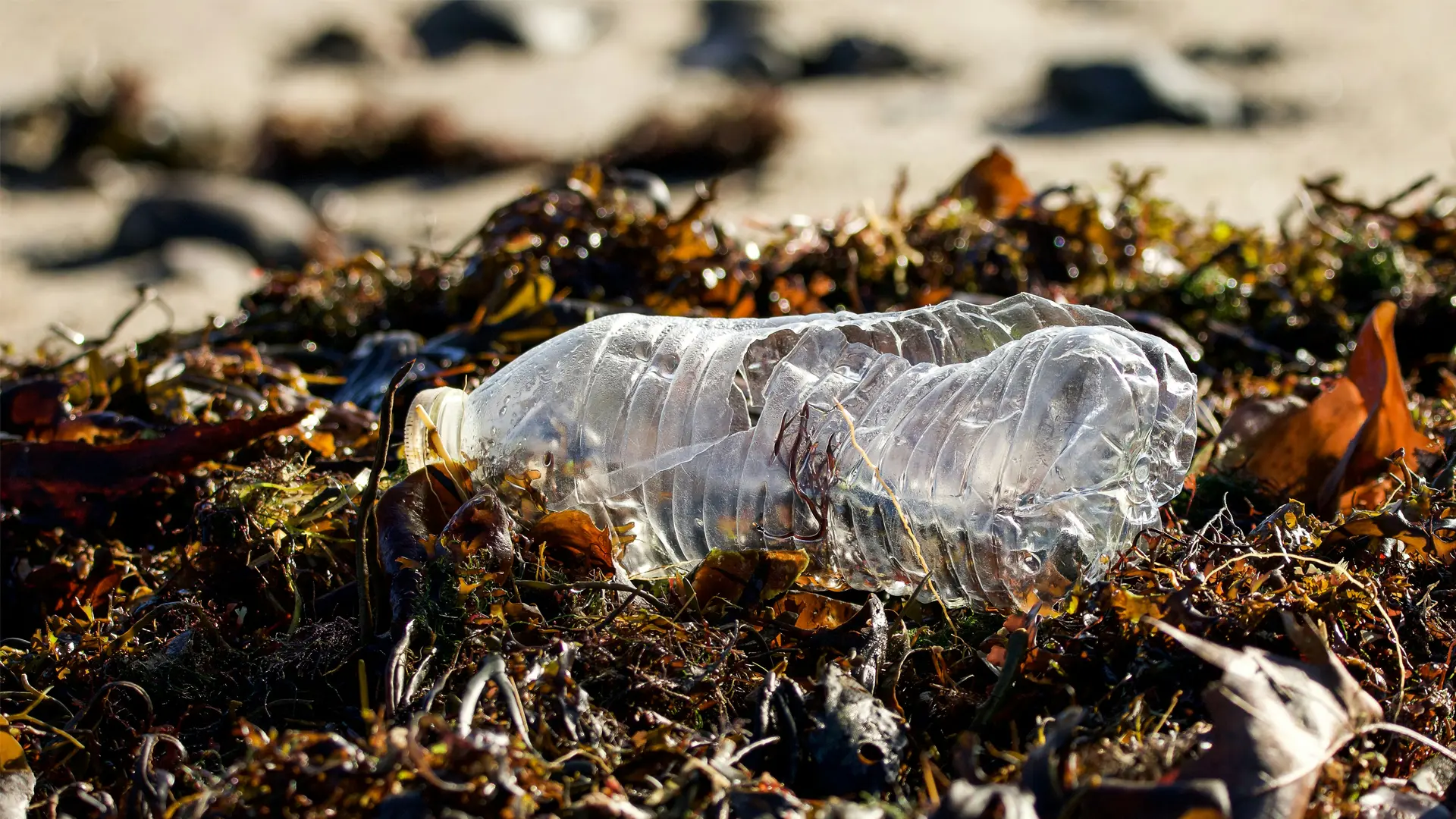
The Plastic Journey: From Oceans to Plates – Unveiling the Invisible Threat
By Dilshani Maralanda Plastic pollution has become a serious global issue, transforming our beautiful, biodiversity-rich oceans into vast dumping grounds. Unlike natural materials, plastics are
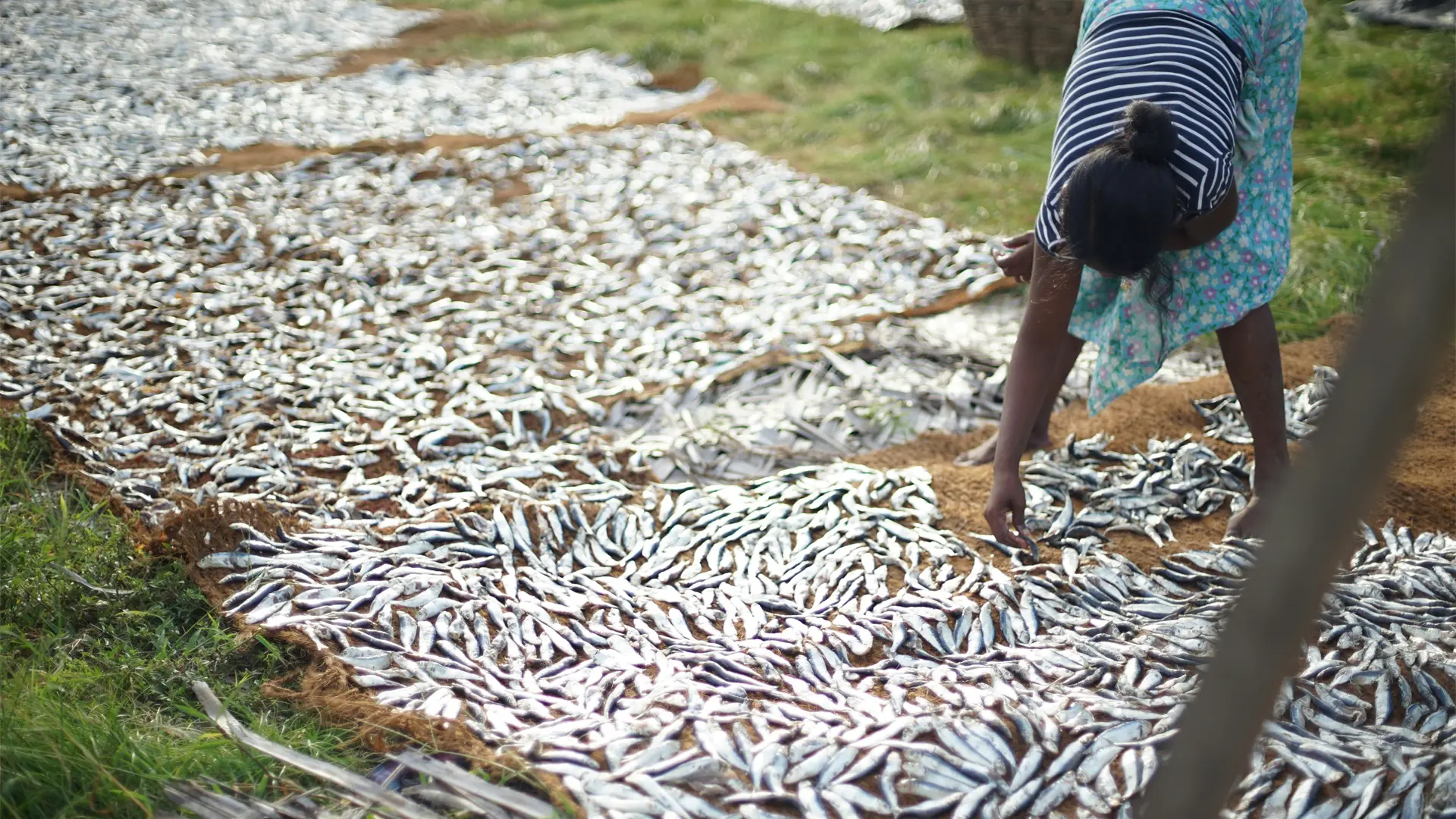
The Unsung Heroines of Sri Lanka’s Coastal Fishing Communities
By Nadithi Jagoda When we picture Sri Lanka’s coastal fishing industry, images of fishermen hauling in their daily catch often come to mind. But behind
